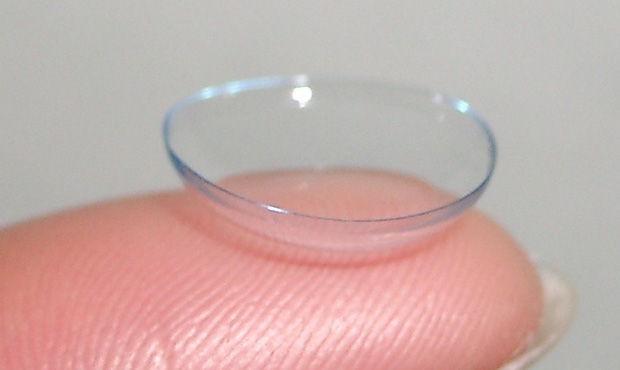Can contact lenses end up in your beer? Well, sort of.
Can contact lenses end up in your beer? Well, sort of.
Microplastics, tiny bits of plastic pollution, are the subject of recent New York Times and National Public Radio articles that explore sources and consequences of ubiquitous microplastic pollution.
New York Times: Contact lens pollution?
The New York Times article covers a surprising potential source of microplastic pollution: contact lenses.
About 20% of America’s 45 million contact lens wearers sometimes flush old contacts down the drain, contributing an estimated 93,000 to 236,000 metric tons of microplastic to our oceans. This unfortunate habit may also contribute to plastic pollution issues in the Mississippi River.
The article details ongoing research into the fate of contact lenses as they move through modern wastewater systems — a contact lens’s first stop after going down the drain.
Flexible lenses seem to be able to pass through filters used to process waste in our wastewater plants at least somewhat whole. They also appear able to escape the effects of microorganisms used to break down waste later in the treatment process. As a result, the lenses may survive somewhat intact before either being discharged into waterways or carried offsite in treated waste (much of which is applied to fields in Minnesota).
From the article: “… going through about nine pounds of treated waste, Mr. Rolsky and a colleague found two fragments of contact lens, implying that while microorganisms might not make much of a mark, physical processing might break them into pieces.”
The research findings suggest two things:
• Wastewater research can be gross.
• Contact lens wearers should toss their used lenses in the trash, not the toilet.
National Public Radio: Tiny plastic is everywhere
We already know that microplastics are found in nearly all tap water, as well as in beer, honey and sea salt. Microplastics are also increasingly common in fish and shellfish.
But how do microplastics first get into the food chain? The NPR article follows researchers as they examine how plastic works its way from tiny plankton to fish larvae to fish, including fish we eat.
The article also highlights how plastics can attract other chemicals in the water that latch onto it, potentially carrying toxic compounds along for the ride.
Addressing microplastic pollution in the Mississippi River
Microplastic pollution is a worldwide problem, including right here in Minnesota.
The 2016 State of the River Report examined microplastics found in water, fish, mussels and sediment in the metro Mississippi River. The results indicate that while contamination is common throughout the river, it’s higher downstream of the metro wastewater treatment plant. This suggests that wastewater is a potentially significant source of microplastics.
While there are many sources of microplastic pollutants in the river, contact lenses are probably pretty low on the list. The report found that fibers are by far the most common type of microplastic pollution. These fibers come primarily from synthetic fabrics (e.g, microfleece, polyester and nylon) and are shed during machine washing as well as transported through atmospheric deposition.
Similar results have been found in the Great Lakes and other surface waters that collect treated wastewater. That's one reason why we suggest choosing clothing and fabrics made from natural materials, rather than plastics. But that's just one step to combatting microplastic pollution.
Here are a few more ways to help:
Reduce / reuse / replace
Avoid single-use plastics like bags, straws, cups, bottles, utensils, take-out containers and more.
• Reduce: The best strategy is to avoid using any plastics you don’t need.
• Re-use: If you do have plastics, try to get the most out of them. Re-use them rather than tossing them and replacing.
• Replace: Find non-plastic, reusable alternatives like reusable grocery bags, produce bags, bottles, utensils, coffee cups, and dry cleaning garment bags.
Recycle
It goes without saying, but we’ll say it anyway. When you use single-use (and other) plastics that can be recycled, always recycle them.
Participate in a river cleanup
Help remove plastics from rivers and streams! This is one of the most direct and rewarding ways to fight plastic pollution in our waters. Check out FMR's event calendar to learn more about volunteer opportunities including cleanups.
Talk to your reps
• You can support the adoption of policies in your community, including local and state bans on single-use plastic bags, bottles and take-out containers. Learn more at plasticbaglaws.org.
• One easy way to help advocate for clean water policies like these is to become an FMR River Guardian. When the time is right, we'll send you a link so you can quickly act online. We'll also invite you to special events like River Guardian happy hours.
Spread the word
Stay informed on issues related to plastic pollution and help make others aware of the problem. Tell your friends and family about how they can be part of the solution, or host a viewing party for one of the many plastic pollution-focused documentaries, like Bag It, Addicted to Plastic, Plasticized, or Garbage Island.
